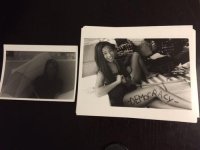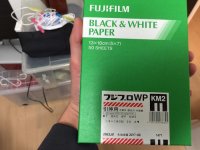bence8810
Well-known
Hi there,
I have just tried my enlarger today for the first time and my prints came out looking without contrast. There are so many variables here and I hope some of you experts could perhaps point me to the right direction.
Enlarger: LPL 3301D
Lens: LPL 50/3.5
Developer: Fuji Papitol (2 components powder) - mixed and used as per the package says
Paper: Fuji KM2 (see attached)
The negative is good for sure as I have developed another shot from it yesterday at a pro darkroom and it came out perfect. Please see attached the two images compared. The little one is the one I printed today at home.
As I don't yet have the filters, I bought and used the graded (2) paper.
I've never used this enlarger before, never used this paper before and never used this developer before. I know, too many variables...
The paper on the right with the good looking print is also fuji but variable Grade and I used filter #2 with it.
Thanks for any pointers.
Ben
I have just tried my enlarger today for the first time and my prints came out looking without contrast. There are so many variables here and I hope some of you experts could perhaps point me to the right direction.
Enlarger: LPL 3301D
Lens: LPL 50/3.5
Developer: Fuji Papitol (2 components powder) - mixed and used as per the package says
Paper: Fuji KM2 (see attached)
The negative is good for sure as I have developed another shot from it yesterday at a pro darkroom and it came out perfect. Please see attached the two images compared. The little one is the one I printed today at home.
As I don't yet have the filters, I bought and used the graded (2) paper.
I've never used this enlarger before, never used this paper before and never used this developer before. I know, too many variables...
The paper on the right with the good looking print is also fuji but variable Grade and I used filter #2 with it.
Thanks for any pointers.
Ben



